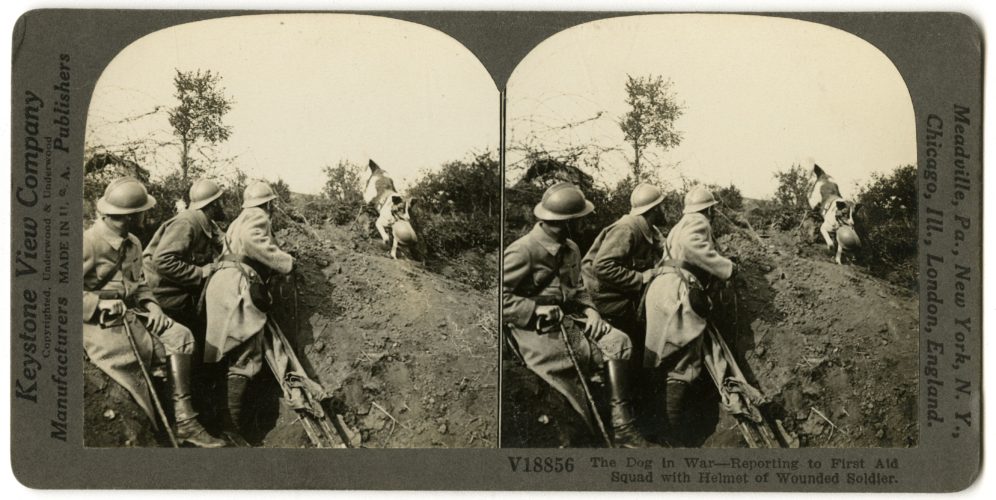The Men They Carried: Dogs in World War I

With the Armistice Day Centennial only seven months away, Americans remember the sacrifices made by the men and women who served in World War I, as well as the hard work required on the home front to support the war effort. The quick mobilization and training of troops is certainly one of the more impressive feats the United States accomplished during its involvement. When considering the manpower utilized by the U.S. alone, the numbers are staggering, with an increase in Armed Forces personnel from 350,000 in April 1917 to nearly 4 million at the war’s end in November 1918. Military units on both sides of the conflict did not rely on manpower alone, as animals such as horses, mules, and carrier pigeons played important roles at camps, during travel, and on the front lines. However, let us not forget the sacrifices made by the some of the creatures whose unwavering friendships we hold closest to our hearts—dogs.

Armies recognized that many of the qualities our furry friends possess—exceptional sense of smell and heightened hearing, intelligence, and admirable loyalty— make them excellent recruits. Trainers preferred larger, more durable breeds that could survive in harsh weather conditions and traverse rugged terrain, like German shepherds, retrievers, pointers, and Airedale terriers (not to think any less of Chihuahuas and dachshunds!). Dogs were trained in a variety of skills. Sentry and scout dogs were trained to detect and signal soldiers when the enemy was advancing or close by, especially at night. Sometimes dogs were stationed in the trenches where they alerted soldiers to oncoming attacks from opposing lines. Due to their size and mobility, dogs were easily kept safe in the trenches and were more reliable than horses and mules to successfully deliver ammunition and other supplies.

One of dogs’ most important duties was identifying and retrieving wounded men from the battlefield. These medical dogs located wounded and dying men who were often unable to crawl to a spot where they would be easily found. Unfortunately, injured soldiers were sometimes not recovered because they were in crater holes or dugouts in isolated areas and were never found by their comrades. Both the Army and Red Cross trained these dogs to carry medical supplies in a box on their backs, enabling injured soldiers to treat themselves on the spot once discovered. The dog would tear off a part of the man’s uniform and carry it back to camp to let their handlers know they found someone. They then led medical personnel to the injured soldier for transport to a hospital for more advanced treatment. Other duties included guarding prisoners of war and carrying mail from post to post. Sadly (albeit infrequently), dogs were sometimes sent with timed explosives into enemy trenches, although this seems to have only been done in dire circumstances. Dogs sometimes lived with soldiers as unit mascots, no doubt providing therapeutic and emotional support as a comforting companion.
As we remember the various ways Americans contributed to the war effort, may we remember the dogs who died alongside their companions during the Great War, and the families who said goodbye to their beloved pets, surely knowing that their dogs’ bravery would make them proud.
Thanks to Kristen Newby, project coordinator at the Ohio History Connection, for this week’s post!



Leave a Reply
You must be logged in to post a comment.